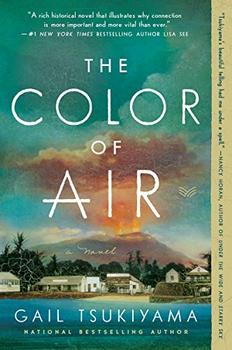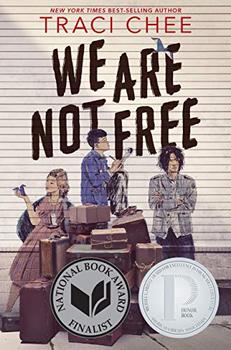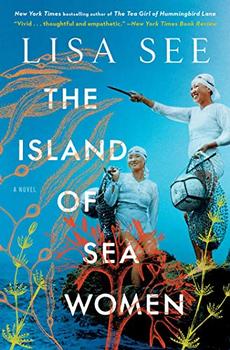Summary | Excerpt | Reviews | Beyond the book | Read-Alikes | Genres & Themes | Author Bio

Daniel was raised in Hilo, Hawaii by Japanese immigrant parents. Having traveled to the U.S. mainland to study medicine, he worked hard to overcome racial stereotypes and be taken seriously as a doctor. Following a traumatic incident, however, he returns to his hometown in search of comfort and renewed purpose. But this is his first proper homecoming since the death of his beloved mother, Mariko, and he must confront those he left behind in pursuit of his career. This includes Koji, the true love of his mother's life, and Maile, his own former childhood sweetheart, both of whom are masking their own hidden pain. Worse still, his return coincides with the eruption of the volcano Mauna Loa (see Beyond the Book). With lava flowing towards Hilo, its people's secrets rise to the fore, as the loves and losses that bind this community together are gradually uncovered.
There's a straightforwardness to Gail Tsukiyama's prose that ensures the book never feels overwritten, and yet she engages the senses in a way that vividly transports the reader to the lush jungles and balmy sugar plantations of Hawaii. She reflects to great effect the paradoxical beauty and danger that comes with living on such volatile land, and the reverence for nature that thrives among its people as a result.
Though the historical details are presented equally well – particularly the evocation of life for first- and second-generation Japanese immigrants in Hawaii and their fight with plantation owners for fair living and working conditions – there is a timeless quality to the book's central theme of found family. Despite their Asian roots and the stigma they face in the U.S., it is Hilo that represents home to Daniel and the rest of the Japanese American community. It is Hilo they are drawn back to in difficult times; it is Hilo they fear being forced to leave because of Mauna Loa's latest eruption; and it is their fellow Hilo residents from whom they take strength as they weather life's various challenges.
Flashbacks to the past and multiple perspective changes help to reinforce the characters' bonds both to each other and to the land around them. Initially, this can call for a little patience as you make sense of the many connections between supporting characters and slot everyone into the bigger picture. Once this happens, however, it's a book that is easy to fly through, with the characters' well-defined personalities and realistic flaws making them as believable as they are endearing.
As the lava edges ever closer to Hilo, there is both a narrative and a thematic tension that swell to boiling point. Though she does provide a sense of release and ultimate closure, Tsukiyama avoids an explosive or salacious denouement, opting instead for something that feels tender yet right. Offering fascinating insight into a slice of Hawaii's cultural and natural history, and a poignant look at the unique brand of love that endures for the community that raised you, The Color of Air is a novel that is all the more powerful for its understated approach to big themes and ideas.
![]() This review was originally published in The BookBrowse Review in July 2020, and has been updated for the
May 2021 edition.
Click here to go to this issue.
This review was originally published in The BookBrowse Review in July 2020, and has been updated for the
May 2021 edition.
Click here to go to this issue.

If you liked The Color of Air, try these:

by Traci Chee
Published 2022
"All around me, my friends are talking, joking, laughing. Outside is the camp, the barbed wire, the guard towers, the city, the country that hates us.
We are not free.
But we are not alone."

by Lisa See
Published 2020
A new novel from Lisa See, the New York Times bestselling author of The Tea Girl of Hummingbird Lane, about female friendship and family secrets on a small Korean island.
Your guide toexceptional books
BookBrowse seeks out and recommends the best in contemporary fiction and nonfiction—books that not only engage and entertain but also deepen our understanding of ourselves and the world around us.